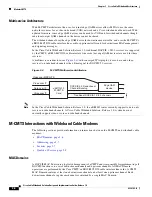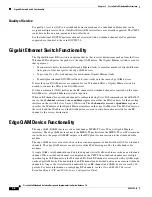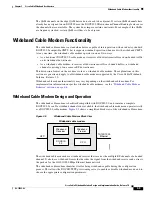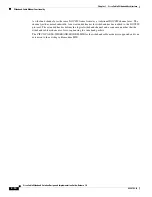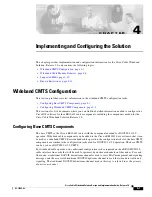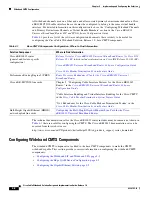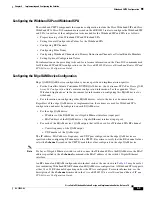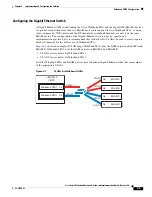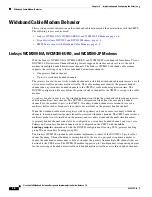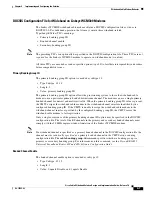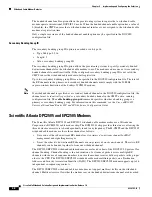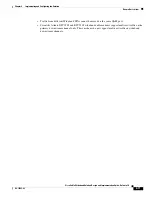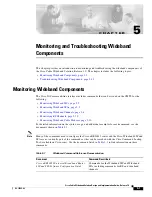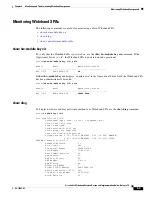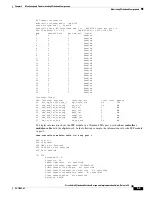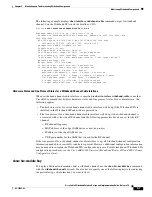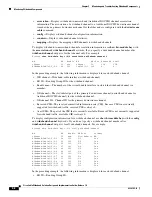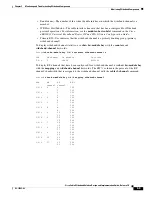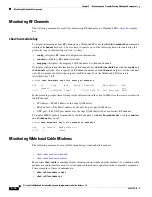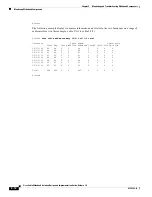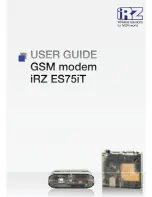
4-9
Cisco Cable Wideband Solution Design and Implementation Guide, Release 1.0
OL-10705-02
Chapter 4 Implementing and Configuring the Solution
Wideband Cable Modem Behavior
The configuration file used for the Scientific Atlanta DPC2505/EPC2505 wideband cable modem is
identical to a DOCSIS 2.0 configuration file. DOCSIS 2.0 configuration file tools like the Cisco
Broadband Configurator can be used to create configuration files for this modem.
Automatic Adjustments During Scientific Atlanta DPC2505 and EPC 2505 Registration
During modem registration, upon reception of the REG-RSP from the CMTS, the Scientific Atlanta
DPC2505/EPC2505 modem first checks for presence and correctness of the various encodings.
•
If any encodings are incorrectly formatted or exceed the modem's capabilities, the wideband cable
modem may detect this and immediately send a REG-ACK message with a confirmation code
indicating failure. The confirmation code will be reject-bad-rcc(208) if the RCC encoding is bad, or
reject-other(1) if some other problem is found.
•
If encodings appear to be valid, the wideband cable modem attempts to tune its non-primary
receivers to the non-primary downstream channels specified in the RCC. The RCC may specify zero,
one, or two non-primary downstream channels. If the cable modem fails to tune to the designated
non-primary downstream channels, it will send a REG-ACK with confirmation code
reject-bad-rcc(208).
In the case of wideband channels overlapping on some sets of QAMs, if the DPC2505 modem rejects the
registration with confirmation code of reject-bad-rcc(208), something is wrong— either an incorrect
plant topology configuration or a bad tuner in the cable modem. The CMTS records this occurrence.
When the same cable modem tries to register again, the CMTS chooses different wideband channels
preferably residing on a different sets of QAMs.
The process continues until the wideband cable modem successfully registers on a wideband channel or
all choices of wideband channels are exhausted. If all choices are exhausted, the CMTS put the Scientific
Atlanta DPC2505 modem in DOCSIS 2.0 mode on its next attempt to register.
A timeout value of 24 hours is defined for the CMTS to clear the bad QAM status recorded for each CM.
Therefore, the wideband cable modem is allowed to retry the bad set of QAMs in the future.
CMTS Interactions with Wideband Cable Modems
This section provides information CMTS interactions with wideband cable modems:
•
Registration for Wideband Cable Modems, page 4-9
•
Load Balancing for Wideband Cable Modems, page 4-10
In these sections, all statements are generic and apply to the following modems:
•
Linksys WCM300-NA
•
Linksys WCM300-EURO
•
Linksys WCM300-JP
•
Scientific Atlanta DPC2505
•
Scientific Atlanta EPC2505
Registration for Wideband Cable Modems
After the wideband cable modem completes the initialization process on the primary downstream
channel, the CMTS uses the REG-RSP message to enable multiple downstream RF channel operation
(wideband channel operation) and to assign channels to the cable modem.


